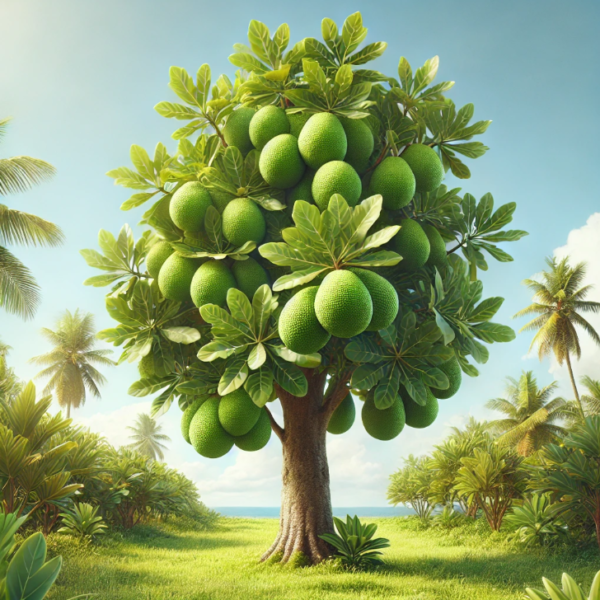Breadfruit: The Tropical Marvel-by Kalani-eLanka

Breadfruit (Artocarpus altilis) is a versatile and highly nutritious tropical fruit native to the Pacific islands. Farmers in Southeast Asia, the Caribbean, and parts of Africa also cultivate it widely. Known for its unique texture and culinary adaptability, breadfruit has served as a staple food for centuries in many tropical regions.
Breadfruit is believed to have originated in the Indo-Malay region and was later spread across the Pacific islands by Austronesian voyagers. It gained global attention in the 18th century when British botanist Sir Joseph Banks advocated for its use as a cheap, high-yield food source for enslaved people in the Caribbean.
Breadfruit trees are fast-growing and can reach heights of up to 85 feet (26 meters). The fruit is round to oblong, with a rough, green, or yellowish skin that becomes soft and aromatic when ripe. Inside, the flesh is starchy and creamy, resembling the texture of bread when cooked—hence the name.
Nutritional Value
Breadfruit is a powerhouse of nutrition. It is rich in:
- Carbohydrates: Providing a significant source of energy.
- Fiber: Supporting digestive health.
- Vitamins: Especially Vitamin C and B-complex vitamins like niacin and thiamine.
- Minerals: Including potassium, magnesium, and iron.
- Protein: While not as high as legumes, breadfruit contains a modest amount of protein compared to other starchy foods.
Breadfruit is incredibly versatile in the kitchen. It can be boiled, baked, roasted, or fried. In its unripe state, it is often treated like a vegetable and used in savory dishes such as curries and stews. When ripe, the fruit becomes sweeter and can be used in desserts or mashed into a creamy consistency. Breadfruit flour is also gaining popularity as a gluten-free alternative for baking.
In many Pacific island cultures, breadfruit is more than just food; it holds symbolic and spiritual importance. It is often associated with abundance, life, and community. Traditional practices include planting breadfruit trees during significant life events, such as births or weddings.
Breadfruit cultivation is environmentally friendly. The trees are resilient, require minimal maintenance, and can thrive in poor soils. Additionally, breadfruit trees help combat climate change by sequestering carbon dioxide and preventing soil erosion.
Despite its many benefits, breadfruit remains underutilized on a global scale. Challenges include limited shelf life, post-harvest handling issues, and a lack of awareness about its potential. However, recent efforts in research and sustainable farming practices aim to popularize breadfruit as a viable food source for combating food insecurity.
Breadfruit is a remarkable fruit with immense potential to address global food challenges while promoting sustainable agricultural practices. Its rich history, nutritional profile, and adaptability make it a true marvel of the tropics. Whether you enjoy it roasted, fried, or baked, breadfruit is a testament to nature’s ingenuity and resilience.






















